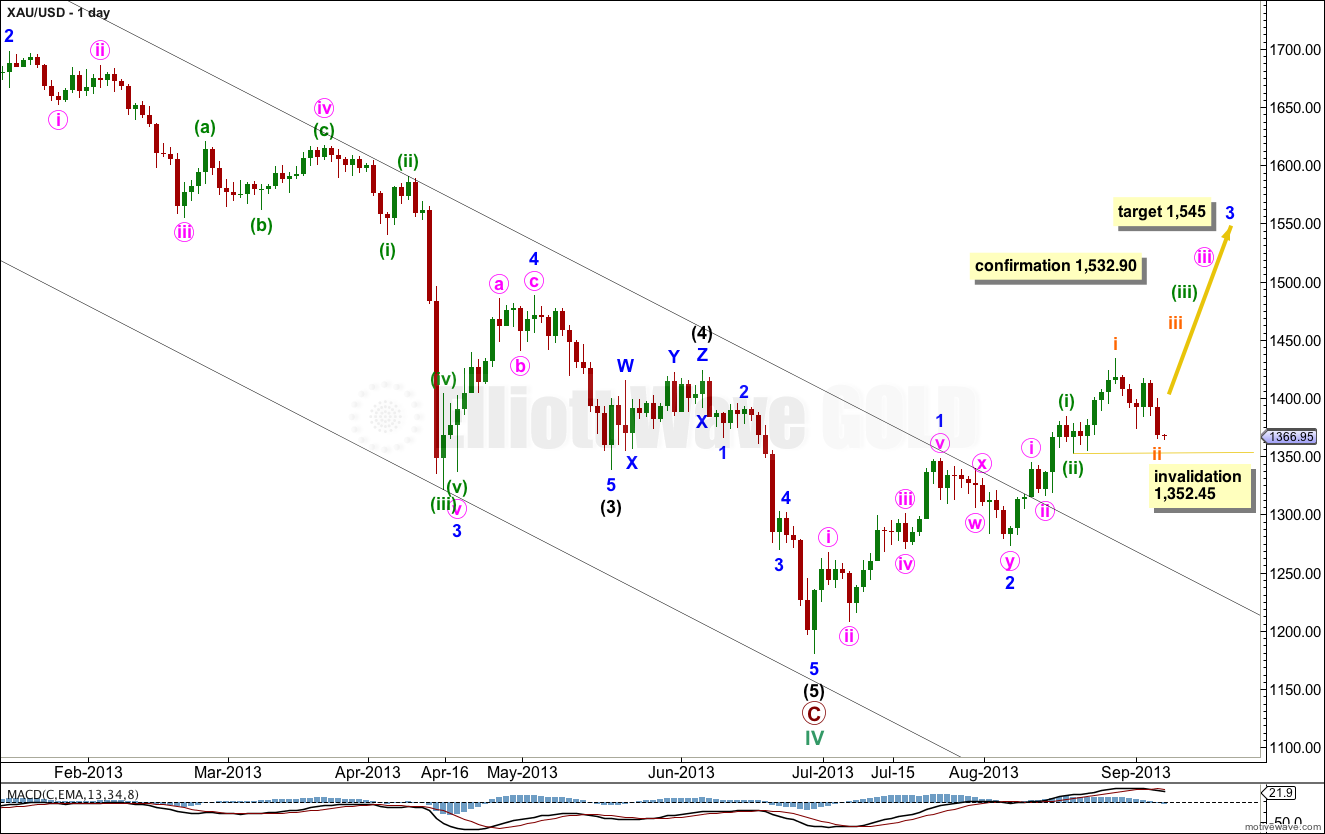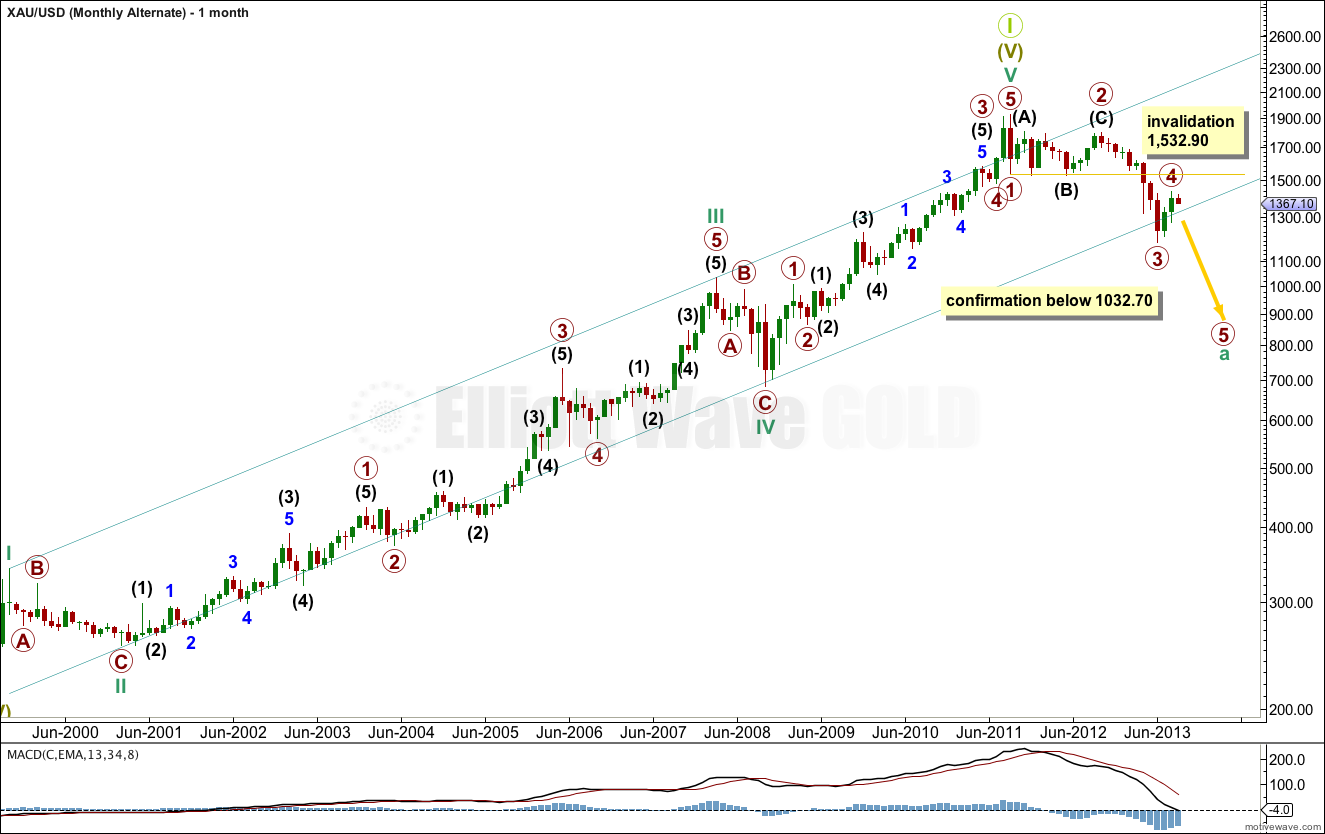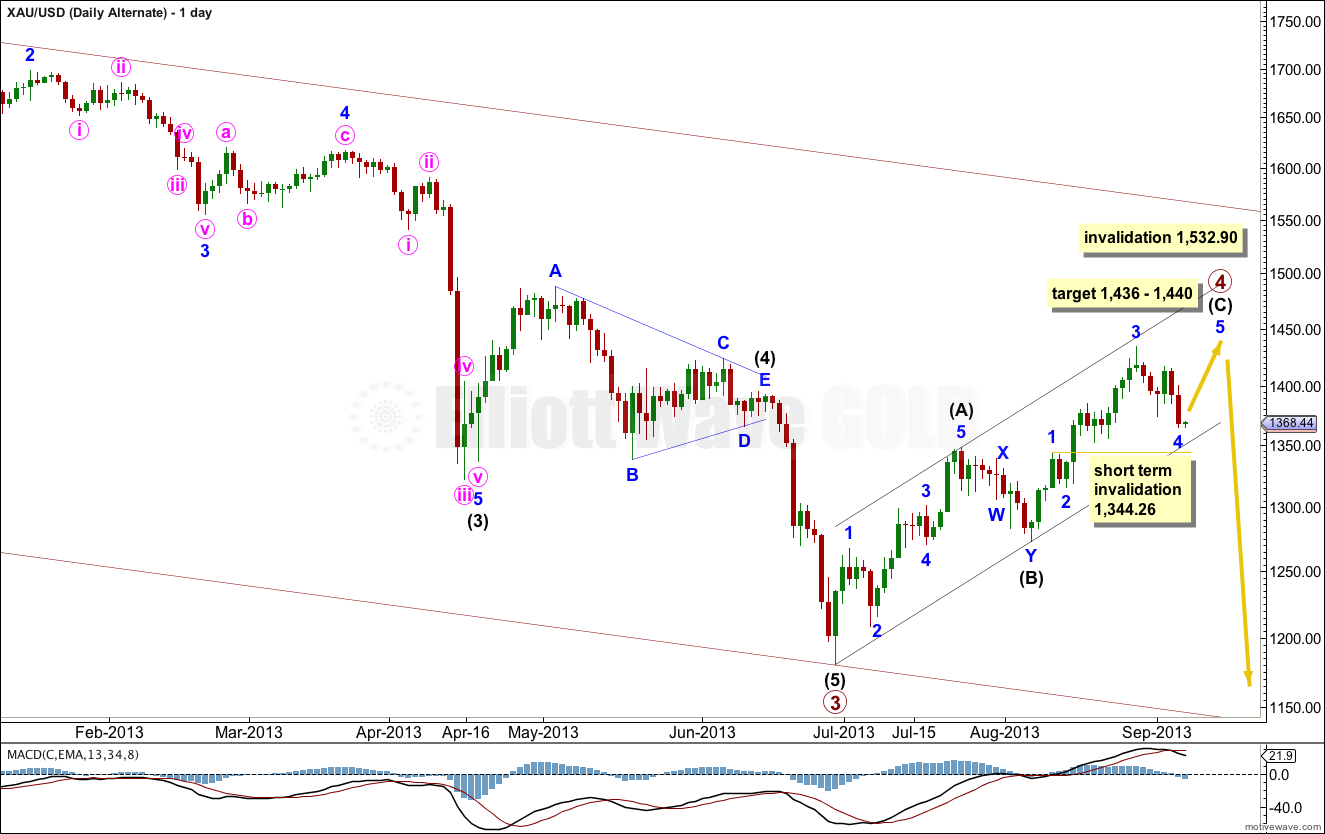Downwards movement invalidated both hourly wave counts, which both had very close by invalidation points.
I have spent more time today looking at structures on the monthly chart, at primary and cycle degree. I have a new alternate for you which sees recent upwards movement as a primary degree fourth wave correction.
Click on the charts below to enlarge.
Main Wave Count.
This will remain my main monthly wave count for gold because it has better Fibonacci ratios, particularly in the middle of the third wave. It is extremely common for gold to have excellent Fibonacci ratios in its third waves.
I have redrawn the channel as a best fit. Cycle wave IV just overshoots the channel.
If cycle wave V upwards has just begun, it should last about a year or longer. At 1,961 cycle wave V would reach equality in length with cycle wave I.
Cycle wave IV may not move into cycle wave I price territory. This wave count would be invalidated with movement below 1,032.70.
I am using this wave count as my main wave count today because it agrees with MACD. If we have seen a trend change at cycle degree, and upwards movement is within a third wave, then it should show an increase in upwards momentum beyond the end of minor wave 1. Because we have not seen that increase in upwards momentum yet we probably have not seen the middle of the third wave.
At 1,545 minor wave 3 would reach 1.618 the length of minor wave 1.
Within minor wave 3 subminuette wave ii may not move beyond the start of subminuette wave i. This wave count is invalidated at minute wave degree with movement below 1,352.45.
Downwards movement is a continuation of this correction.
Downwards movement labeled micro wave A subdivides very nicely into a five wave impulse.
Ratios within micro wave A are: submicro wave (3) has no Fibonacci ratio to submicro wave (1), and submicro wave (5) is just 1.29 short of 2.618 the length of submicro wave (1).
Within micro wave C submicro wave (3) is 3.32 longer than equality with micro wave (1). At 1,357 micro wave C would reach equality with micro wave A.
When the downwards movement of micro wave C is a completed five wave impulse structure then we should see a resumption of the upwards trend.
Subminuette wave ii may not move beyond the start of subminuette wave i. This wave count is invalidated at minute wave degree with movement below 1,352.45.
It remains possible that this downwards movement is minute wave iv. If price moves below 1,352.45 this wave count would be confirmed. At that stage the invalidation point would move down to 1,344.26. Minute wave iv may not move into minute wave i price territory.
This wave count does not agree with MACD. The middle of the third wave has not shown an increase in momentum beyond that seen for minor wave 1. For this reason it should be an alternate.
Alternate Wave Count.
This is a previously published monthly alternate wave count. I have adjusted the wave count within the new downwards movement to see a possible impulse unfolding downwards, rather than a completed zigzag.
If cycle wave a is unfolding as an impulse then recent upwards movement is primary wave 4 within the impulse. Primary wave 4 may not move into primary wave 1 price territory. This wave count is invalidated with movement above 1,532.90.
Primary wave 4 is incomplete.
This wave count is an alternate because there are no Fibonacci ratios at intermediate degree within primary wave 3 of cycle wave III. I have spent much time trying to see a better fit in terms of ratios which meets all EW rules for this wave count, but so far I cannot. This does not mean it does not exist!
The problem of the lack of ratios right in the middle of a third wave, where gold normally has excellent ratios, must reduce the probability of this wave count.
I have adjusted the wave count within the downwards movement for primary wave 3. Both the main and this alternate see this as a five wave impulse, but there is more than one way to see the subdivisions. If intermediate wave (4) was a contracting triangle then the problem of the truncation within the main wave count is resolved. However, here intermediate wave (5) no longer looks like such a clear five wave impulse, and it now looks like a three.
The key is in the downwards movement labeled minor wave D within intermediate wave (4)–is it a three or a five? I have looked back at this on the hourly chart and this movement is ambiguous. It can be seen either way.
A big thank you to Joe Taverna for the idea of the fourth wave triangle.
This adjustment of primary wave 3 does not make any difference now to the wave count within primary wave 4 though.
For this alternate wave count we need to see minor wave 3 within intermediate wave (C) as completed; there is not enough room for upwards movement if the third wave is extending.
At 1,440 intermediate wave (C) would reach intermediate wave (A). At 1,436 minor wave 5 would reach equality with minor wave 3. This gives us a $4 target zone for one final upwards wave. Thereafter, the downwards trend should resume.
There is no downwards invalidation point for this alternate.






